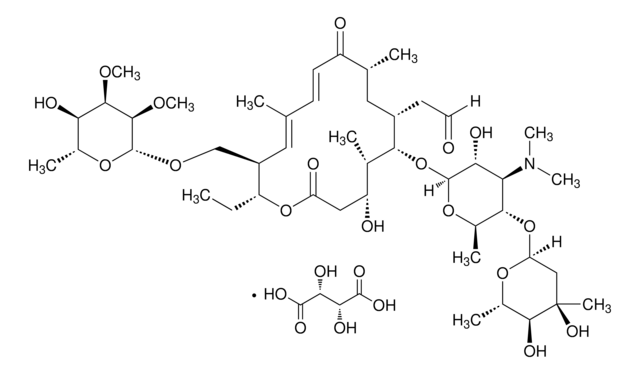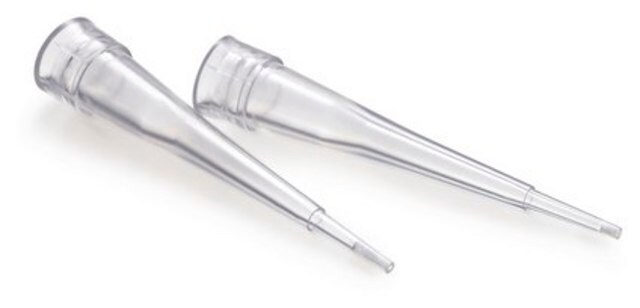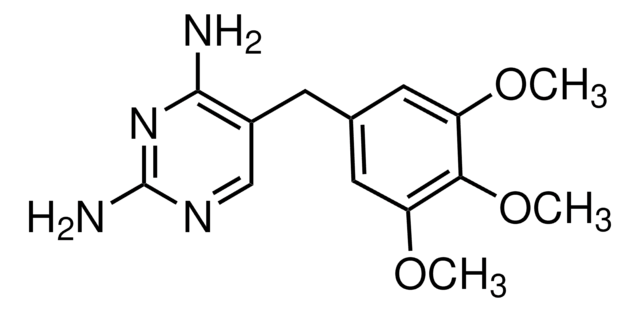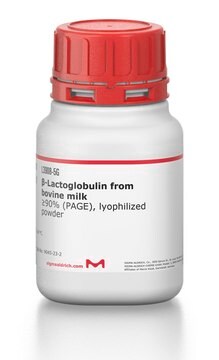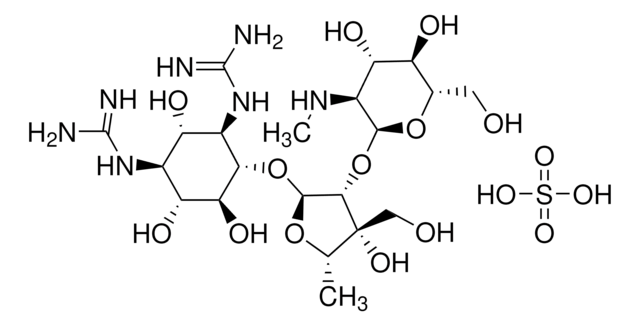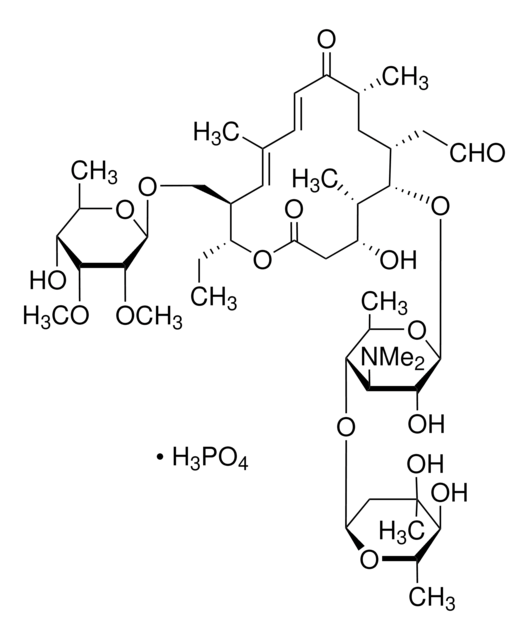Wichtige Dokumente
T3397
Tylosin solution
solution, suitable for cell culture, BioReagent
About This Item
Empfohlene Produkte
Produktbezeichnung
Tylosin solution, 8 mg/mL in 0.9% NaCl, 0.1 μm filtered, BioReagent, suitable for cell culture
Qualitätsniveau
Sterilität
0.1 μm filtered
Produktlinie
BioReagent
Form
solution
Konzentration
8 mg/mL in 0.9% NaCl
Methode(n)
cell culture | mammalian: suitable
Verunreinigungen
endotoxin, tested
Farbe
colorless to yellow
Wirkungsspektrum von Antibiotika
Gram-positive bacteria
mycoplasma
Wirkungsweise
protein synthesis | interferes
Lagertemp.
2-8°C
SMILES String
O[C@H]([C@@H](O)C(O)=O)C(O)=O.CC[C@H]1OC(=O)C[C@@H](O)[C@H](C)[C@@H](O[C@@H]2O[C@H](C)[C@@H](O[C@H]3C[C@@](C)(O)[C@@H](O)[C@H](C)O3)[C@@H]([C@H]2O)N(C)C)[C@@H](CC=O)C[C@@H](C)C(=O)\C=C\C(C)=C\[C@@H]1CO[C@@H]4O[C@H](C)[C@@H](O)[C@@H](OC)[C@H]4OC
InChI
1S/C46H77NO17.C4H6O6/c1-13-33-30(22-58-45-42(57-12)41(56-11)37(52)26(5)60-45)18-23(2)14-15-31(49)24(3)19-29(16-17-48)39(25(4)32(50)20-34(51)62-33)64-44-38(53)36(47(9)10)40(27(6)61-44)63-35-21-46(8,55)43(54)28(7)59-35;5-1(3(7)8)2(6)4(9)10/h14-15,17-18,24-30,32-33,35-45,50,52-55H,13,16,19-22H2,1-12H3;1-2,5-6H,(H,7,8)(H,9,10)/b15-14+,23-18+;/t24-,25+,26-,27-,28+,29+,30-,32-,33-,35+,36-,37-,38-,39-,40-,41-,42-,43+,44+,45-,46-;1-,2-/m11/s1
InChIKey
ICVKYYINQHWDLM-KBEWXLTPSA-N
Allgemeine Beschreibung
Anwendung
Biochem./physiol. Wirkung
Verpackung
Angaben zur Herstellung
Lagerung und Haltbarkeit
Sonstige Hinweise
Lagerklassenschlüssel
10 - Combustible liquids
WGK
WGK 2
Flammpunkt (°F)
Not applicable
Flammpunkt (°C)
Not applicable
Hier finden Sie alle aktuellen Versionen:
Besitzen Sie dieses Produkt bereits?
In der Dokumentenbibliothek finden Sie die Dokumentation zu den Produkten, die Sie kürzlich erworben haben.
Kunden haben sich ebenfalls angesehen
Unser Team von Wissenschaftlern verfügt über Erfahrung in allen Forschungsbereichen einschließlich Life Science, Materialwissenschaften, chemischer Synthese, Chromatographie, Analytik und vielen mehr..
Setzen Sie sich mit dem technischen Dienst in Verbindung.